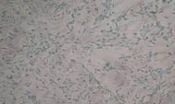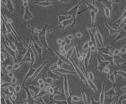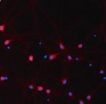(Press-News.org) While flexible gadgets such as "electronic skin" and roll-up touch screens are moving ever closer to reality, their would-be power sources are either too wimpy or too stiff. But that's changing fast. Scientists have developed a new device that's far thinner than paper, can flex and bend, and store enough energy to provide critical back-up power for portable electronics. Their report appears in the Journal of the American Chemical Society.
In their paper, James Tour and colleagues point out that many materials that have been investigated for energy storage potential are pliant but don't pack much power, or they can load up on energy but are rigid. These include polymers and carbon-based materials such as carbon nanotubes, which have been all the rage for certain applications. But these materials fall short as reliable supercapacitors, which are batteries' lesser-known cousins that step in when the main energy source peters out. Seeking a better solution to this energy hurdle, Tour's team took a different approach.
They figured out a way to make a flexible thin film out of nickel and fluoride that is full of tiny holes, or nanopores. These pores throughout the material allow ions to flow easily, a critical feature for an energy device. The resulting structure can pack in far more power for its size. The researchers show that they can bend and fold the thin film and recharge it thousands of times with little loss in performance. They also say that manufacturers could easily scale up the process for mass production.
INFORMATION:
The authors acknowledge funding from the Smalley Institute for Nanoscale Science and Technology and the Air Force Office of Scientific Research MURI program.
The American Chemical Society is a nonprofit organization chartered by the U.S. Congress. With more than 161,000 members, ACS is the world's largest scientific society and a global leader in providing access to chemistry-related research through its multiple databases, peer-reviewed journals and scientific conferences. Its main offices are in Washington, D.C., and Columbus, Ohio.
To automatically receive news releases from the American Chemical Society, contact newsroom@acs.org.
Follow us: Twitter Facebook
Energy device for flexible electronics packs a lot of power
2014-05-07
ELSE PRESS RELEASES FROM THIS DATE:
Statistical test increases power of genetic studies of complex disease
2014-05-07
BETHESDA, MD – May 7, 2014 – The power of genome-wide association studies (GWAS) to detect genetic influences on human disease can be substantially increased using a statistical testing framework reported in the May issue of the journal GENETICS.
Despite the proliferation of GWAS, the associations found so far have largely failed to account for the known effects of genes on complex disease — the problem of "missing heritability." Standard approaches also struggle to find combinations of multiple genes that affect disease risk in complex ways (known as genetic interactions).
The ...
Blogosphere exerts new consumer influence on food industry
2014-05-07
Earlier this year, bloggers scored a high-profile victory in their campaign against a common bread ingredient — also used in yoga mats and other plastics — when Subway announced it was dropping the substance from its dough recipe. The case highlights the powerful influence of online campaigns, and how they are changing the food industry, according to an article in Chemical & Engineering News (C&EN), the weekly news magazine of the American Chemical Society.
Melody M. Bomgardner, senior editor at C&EN, notes that consumers' curiosity and outrage about what's in their ...
Repeated preschool wheeze may set the stage for long-term damage in lung function
2014-05-07
This news release is available in French. Children who wheeze are at risk of developing damage that will affect their lung function by the age of 6 years, according to researchers at CHU Sainte-Justine Hospital and the University of Montreal. These appear to be persistent, even if asthma symptoms seem to disappear at least temporarily by school age in several cases. Children with recurrent symptoms that are severe enough to warrant a visit to the emergency department are particularly at risk of seeing their lung function affected. This may persist in adulthood and into ...
The Swiss paper wasp, a new species of social Hymenoptera in Central Europe
2014-05-07
Swiss scientists have discovered a new species of aculeate wasp, not hidden somewhere in a jungle on a remote continent, but in Central Europe, in a swampy area just a few kilometers from Zurich. The new species named "Polistes helveticus", or the Swiss paper wasp, was described in the open access journal ZooKeys.
Paradoxically, this species has been long known in Central Europe but was confused for decades with a closely related species native to southern Europe. Only after the latter expanded its range to northern Switzerland, possibly following climate change, was ...
TAG-1 induces apoptosisrelated gene expression without triggering glioma apoptosis
2014-05-07
A recent study reported by Haigang Chang and co-workers from the First Affiliated Hospital of Xinxiang Medical University in China verified the effects of transient axonal glycoprotein-1 (TAG-1) on cell viability and p53, epidermal growth factor receptor (EGFR), and amyloid precursor protein (APP) intracellular C-terminal domain (AICD) expression in U251 glioma cells. Their pilot study showed that the signaling pathways induced by TAG-1, TAG-1/APP/AICD/p53 and TAG-1/APP/AICD/EGFR, did not inhibit glioma development by inhibiting cell proliferation or by inducing apoptosis. ...
Shuganjieyu capsule increases neurotrophic factor expression in a rat model of depression
2014-05-07
Shuganjieyu capsule has been approved for clinical treatment by the State Food and Drug Administration of China since 2008. In the clinic, Shuganjieyu capsule is often used to treat mild to moderate depression. Prof. Jingping Zhao and team from the Second Xiangya Hospital, Central South University in China conducted a study to examine the effect of Shuganjieyu capsule on behavioral changes in a rat model of depression. They focused on the underlying mechanisms of Shuganjieyu capsule by examining brain-derived neurotrophic factor and phosphorylated cyclic adenosine monophosphate ...
Psilocybin inhibits the processing of negative emotions in the brain
2014-05-07
Emotions like fear, anger, sadness, and joy enable people to adjust to their environment and react flexibly to stress and strain and are vital for cognitive processes, physiological reactions, and social behaviour. The processing of emotions is closely linked to structures in the brain, i.e. to what is known as the limbic system. Within this system the amygdala plays a central role – above all it processes negative emotions like anxiety and fear. If the activity of the amygdala becomes unbalanced, depression and anxiety disorders may develop.
Researchers at the Psychiatric ...
rAAV/ABAD-DP-6His attenuates oxidative stress induced injury of PC12 cells
2014-05-07
The effects of Amyloid beta (Aβ)-Aβ-binding alcohol dehydrogenase (ABAD) may exacerbate Alzheimer's disease pathology. Therefore, blocking Aβ-ABAD-mediate effects with ABAD decoy peptide (ABAD-DP) may be a potential therapeutic strategy for Alzheimer's disease. Dr. Jiang Wu and team from the First Hospital of Jilin University in China successfully constructed a recombinant adenovirus constitutively secreting and expressing Aβ-ABAD decoy peptide (rAAV/ABAD-DP-6His). Their results showed that rAAV/ABAD-DP-6His increased superoxide dismutase activity in ...
Starting signal for antiviral defense
2014-05-07
In human cells, DNA occurs only in the cell nucleus as the carrier of genetic information. In order to protect it, specialized proteins regularly scan the individual strands for defects, and repair them. One example of this is the protein Rad50, a DNA sensor that binds to DNA and detects defective sites. A team of scientists headed by Prof. Jürgen Ruland of the TUM together with colleagues from the LMU have now discovered another important task performed by Rad50.
There is normally no DNA in the cytoplasm surrounding the cell nucleus. However, if any does turn up there, ...
Geniposide protects hippocampal neurons via the non-classical estrogen signaling pathway
2014-05-07
Amyloid-β (Aβ) plaques and neurofibrillary tangles are the main pathological hallmarks of Alzheimer's disease, as well as the loss of neurons and synapses. recent reports have shown that estrogen exerts neuroprotective effects. However, large clinical trials in postmenopausal women indicated adverse side-effects of estrogens, such as increased incidence of breast cancer and metrocarcinoma, thereby preventing clinical use of estrogen. Tongluojiunao (TLJN) is an herbal medicine consisting of two main components, geniposide and ginsenoside Rg1. Prof. Qian Hua and ...




